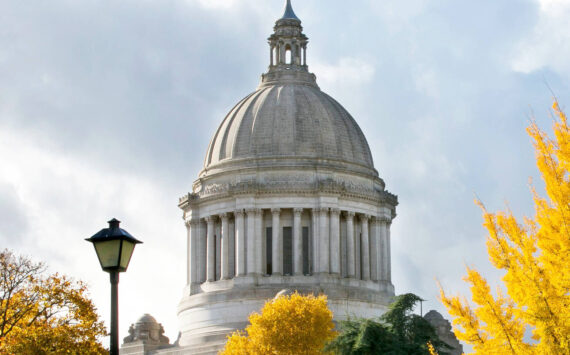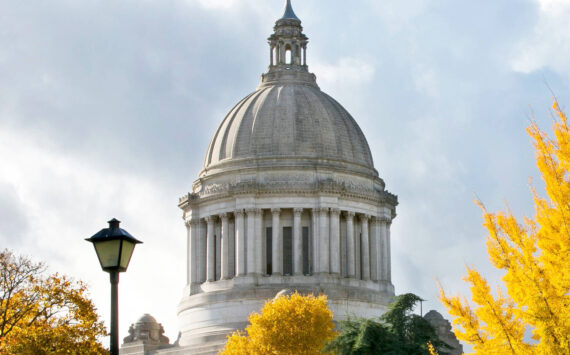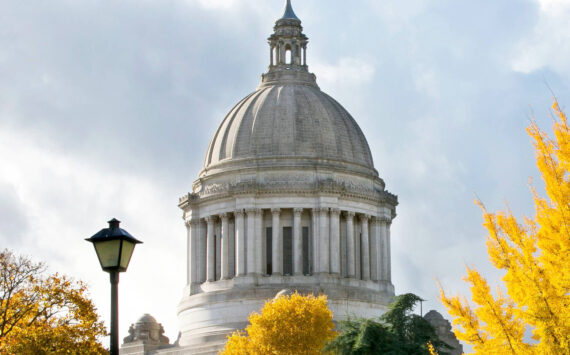Fall has arrived, but consistent fall rains have not, and City of Tacoma, City of Seattle, and City of Everett officials remind local residents the three municipalities remain in the second stage of their drought response plans.
In August, the three cities moved to the voluntary stage of their water shortage response plans and asked customers to reduce their water use by 10 per cent to stretch water supplies for people and fish to the rainy season (see “Hot weather forces Tacoma to activate water shortage response plan,” Tacoma Daily Index, July 27, 2015). The move was the result of historic low river levels combined with record-setting hot and dry weather that have significantly increased the demand for water. By the end of August, the region had collectively cut back on its water use by 10 per cent over a two-week period, hitting the goal set by the City of Tacoma, the City of Everett, and the City of Seattle, according to local officials (see “Local residents meet 10 per cent water reduction goal,” Tacoma Daily Index, Aug. 26, 2015; and “Despite rain, cities continue call for water use reduction,” Tacoma Daily Index, Sept. 9, 2015).
Similarly, Pierce County officials announced in August they would take steps to reduce water usage by at least 10 per cent in response to current drought conditions (see “Pierce County aims to curb water usage by 10 per cent,” Tacoma Daily Index, Aug. 24, 2015). Also, City of Tacoma officials asked general government department directors to reduce water consumption in their departments by at least 10 per cent.
Local officials announced this week that over the last eight weeks, the region has collectively cut back water use by 14 per cent. Although water system managers appreciate what people have done to cut back and thank them for their efforts, continued water use reductions are needed until fall rains return in earnest and fill reservoirs to normal levels.
According to local officials, the water systems rely on fall rains to fill the reservoirs so there is enough water for people and fish. Over the last two weeks, Tacoma and its partner agencies have been sending extra water down the Green River for chinook salmon – a threatened species – to ensure they can spawn successfully. To date, Tacoma Water has received above average numbers of adult chinook salmon at its Trap and Sort Facility, with the peak of spawning occurring now. It appears the timing of the extra water was successful in getting chinook salmon upstream to higher quality spawning areas they may not have otherwise reached, according to local officials. The peak of chinook spawning will last for another two weeks and taper off toward the end of October. The total storage available behind Howard Hanson Dam is near normal levels, thanks to the conservation efforts of Tacoma Water customers and the utility’s ability to use groundwater to supplant river water over the last few months.
Indoor water-saving tips for residents include reducing showering times; checking for and fixing leaks; washing only full loads of laundry and dishes; turning off the tap while brushing teeth or shaving; and choosing water-efficient fixtures and equipment. Indoor water-saving tips for businesses include encouraging reduced showering times at your facilities; serving water only on request; checking for and fixing leaks; washing only full loads of laundry and dishes; providing new towels only on request; checking cooling towers for overflow and excessive blowdown; and choosing water-efficient fixtures and equipment.
Similarly, outdoor water-saving tips for residents include letting lawns go dormant and limiting plant watering to twice a week; watering plants before 8 a.m. or after 7 p.m.; washing your vehicle(s) at locations that recycle the water; doing only essential pressure washing; minimizing refilling swimming pools and hot tubs; and turning off water features.
The next round of regional water use reduction results will be released the week of Oct. 19.




